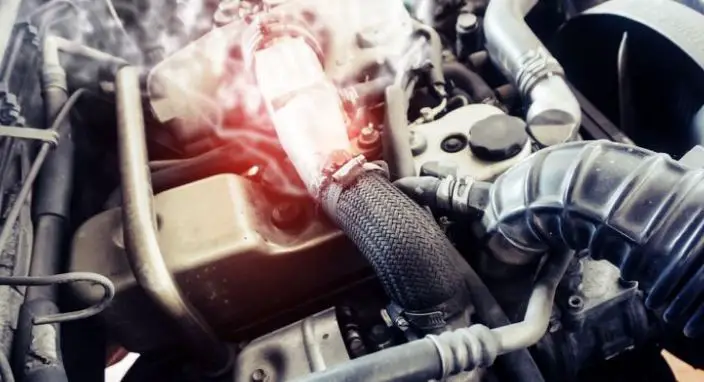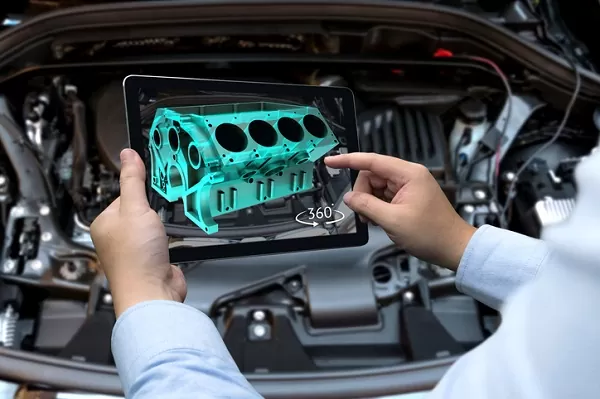If you’ve noticed that your car heats up when idling but cools down when driving, you’re not alone. This is a common issue that many drivers experience, and it’s important to understand why it’s happening. Ignoring this problem could cause serious damage to your engine and lead to costly repairs. In this blog post, we’ll explore the reasons behind this issue and provide you with some tips to prevent overheating and keep your car running smoothly. So, let’s get started and find out why your car is overheating when idling and cooling down when driving.
Let’s Take A Look!
Why Does An Engine Produce Heat?
The engine is the heart of a car, and it works by burning fuel (gasoline or diesel) in a controlled explosion to generate power. The controlled explosion happens inside the engine’s combustion chamber, where a mixture of fuel and air is ignited by a spark plug, creating a small explosion. This explosion forces a piston to move inside the engine, which, in turn, moves the car’s wheels.
As the fuel burns in the engine, it produces heat, which is a natural byproduct of the combustion process. The heat produced by the engine can be quite intense, and if it’s not properly regulated, it can cause the engine to overheat.
How Does A Cars Cooling System Work?
A car’s cooling system is responsible for regulating the engine’s temperature to prevent overheating and ensure optimal performance. The system works by circulating coolant through the engine and radiator, absorbing heat from the engine and dissipating it through the radiator.
The process starts with the coolant pump, which pulls coolant from the radiator and pushes it through the engine’s coolant passages. As the coolant flows through the engine, it absorbs heat from the internal combustion process, which can generate temperatures of over 2,000 degrees Fahrenheit.
The hot coolant then flows out of the engine and into the radiator, where it is cooled by a series of thin, flat tubes with small fins attached to them. The fins help dissipate the heat, while a fan draws air through the radiator to aid in cooling.
The cooling system also includes a thermostat, which regulates the flow of coolant through the engine. The thermostat remains closed when the engine is cold, preventing coolant from flowing until the engine has reached its operating temperature. Once the engine is warm enough, the thermostat opens and allows coolant to flow through the engine and radiator, maintaining the engine at its optimal temperature.
In addition to the thermostat, the cooling system includes a pressure cap, which helps maintain a constant pressure in the system to prevent boiling and ensure optimal heat transfer. The pressure cap has a spring-loaded valve that opens if the pressure in the system exceeds a certain level, allowing excess coolant to escape into an overflow tank
What Can Cause A Car To Overheat When Idling?
Some of the most common causes of overheating when idling are as follows:
Low Coolant Level
The coolant is a mixture of water and antifreeze that circulates through the engine and radiator. If the coolant level is too low, the cooling system may not be able to circulate enough coolant to regulate the engine temperature. This can happen if there is a leak in the system or if the coolant has not been changed regularly and has become contaminated or degraded. A low coolant level can lead to overheating when idling because there is not enough coolant to absorb and dissipate the heat produced by the engine. To prevent this, it’s important to regularly check the coolant level and top it up as needed.
Malfunctioning Water Pump
The water pump is responsible for circulating the coolant through the engine and radiator. If the water pump is not functioning properly, it may not be able to circulate enough coolant, especially when the car is idling. A malfunctioning water pump can lead to overheating when idling because there is not enough coolant circulation to absorb and dissipate the heat produced by the engine. Common signs of a failing water pump include coolant leaks, abnormal noises, and engine overheating. If you suspect a problem with the water pump, it’s important to have it inspected and replaced as needed.
Clogged Radiator
The radiator is designed to cool the coolant by dissipating heat into the surrounding air. Over time, the radiator can become clogged with dirt, debris, or corrosion, which can reduce its effectiveness at dissipating heat. A clogged radiator can lead to overheating when idling because there is not enough heat dissipation to cool the coolant. Common signs of a clogged radiator include engine overheating, slow coolant circulation, and leaks. To prevent this, it’s important to have the radiator inspected and cleaned or replaced as needed.
Faulty Thermostat
The thermostat is responsible for regulating the flow of coolant through the engine. When the engine is cold, the thermostat keeps the coolant from flowing until the engine warms up. When the engine is hot, the thermostat allows the coolant to flow through the engine and radiator to cool it down. If the thermostat is faulty, it may not open when the engine is hot, which can cause the engine to overheat, especially when the car is idling. Common signs of a faulty thermostat include engine overheating, erratic temperature gauge readings, and poor heater performance. To prevent this, it’s important to have the thermostat inspected and replaced as needed.
Car Heats Up When Idling But Cools When Driving – Why?
One reason that the car may overheat while idling is that the cooling system relies on airflow to dissipate heat from the radiator. When the car is stationary, there is little to no airflow, which can cause the engine to overheat. The cooling fan is designed to help pull air through the radiator when the car is stationary, but it may not be enough to maintain the optimal engine temperature. However, when the car is in motion, the air flowing through the grille and over the radiator helps to dissipate heat, which can lower the engine temperature.
Additionally, driving conditions such as speed and terrain can affect engine temperature. For example, driving at higher speeds generates more airflow, which helps to cool the engine. However, driving in hilly terrain or stop-and-go traffic can cause the engine to work harder and generate more heat, leading to higher temperatures.
When the car is in motion, the water pump circulates the coolant more quickly through the engine and radiator, which can also help to regulate engine temperature. The faster the coolant circulates, the more heat it can absorb from the engine and transfer to the radiator for dissipation.
Another factor that can affect engine temperature is the load on the engine. When the car is idling, the engine is still running, but it is not working as hard as when the car is in motion. This means that less heat is being generated, and the cooling system may not be able to regulate the engine temperature as efficiently. However, when the car is in motion, the engine is working harder, generating more heat, and the cooling system has to work harder to keep the engine within its optimal temperature range.
Overall, while there are several factors that can cause a car to overheat while idling, driving the car can help to alleviate the issue by generating more airflow, circulating coolant more quickly, and increasing the load on the engine, all of which can help to regulate engine temperature.
What Should You Do If You Are Experiencing This Issue?
If you are experiencing an issue where your car heats up when idling but cools when driving, it is important to have the cooling system inspected and serviced as soon as possible. A qualified technician can inspect the radiator, thermostat, and other components of the cooling system to identify any issues that may be causing the car to overheat. In addition, they can check for leaks or blockages in the radiator or hoses and replace worn parts as needed. Lastly, they can also check the operation of the cooling fan and make sure that it is running correctly. Taking these steps can help resolve the issue and keep your engine running within its optimal temperature range.
Go Home










